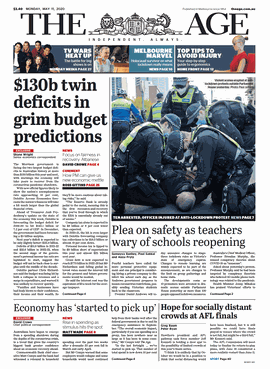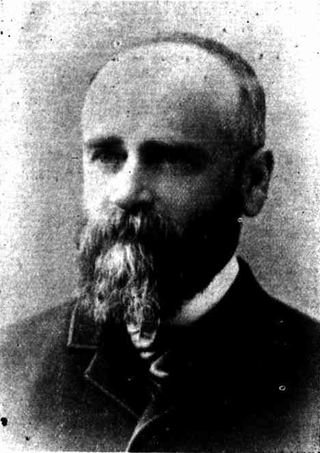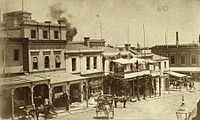
The Herald Sun is a conservative daily tabloid newspaper based in Melbourne, Australia, published by The Herald and Weekly Times, a subsidiary of News Corp Australia, itself a subsidiary of the Murdoch owned News Corp. The Herald Sun primarily serves Melbourne and the state of Victoria and shares many articles with other News Corporation daily newspapers, especially those from Australia.

The Age is a daily newspaper in Melbourne, Australia, that has been published since 1854. Owned and published by Nine Entertainment, The Age primarily serves Victoria, but copies also sell in Tasmania, the Australian Capital Territory and border regions of South Australia and southern New South Wales. It is delivered both in print and digital formats. The newspaper shares some articles with its sister newspaper the Sydney Morning Herald.

The Geelong Advertiser is a daily newspaper circulating in Geelong, Victoria, Australia, the Bellarine Peninsula, and surrounding areas. First published on 21 November 1840, the Geelong Advertiser is the oldest newspaper title in Victoria and the second-oldest in Australia. The newspaper is currently owned by News Corp. It was the Pacific Area Newspaper Publishers Association 2009 Newspaper of the Year.
The Sun News-Pictorial was a morning daily tabloid newspaper published in Melbourne, Victoria, from 1922 until its merger in 1990 with The Herald to form the Herald-Sun.

The Australasian Post, commonly called the Aussie Post, was Australia's longest-running weekly picture magazine.

The Cairns Post is a major News Corporation newspaper in Far North Queensland, Australia, that exclusively serves the Cairns area. It has daily coverage on local, state, national and world news, plus a wide range of sections and liftouts covering health, beauty, cars and lifestyle. The Cairns Post is published every weekday and a weekend edition which is called The Weekend Post is published on Saturdays.
There were two Australian periodicals called The Port Phillip Gazette.

The Melbourne Advertiser was the first newspaper published in Melbourne, in what was then known as Port Phillip District, and now is Victoria, Australia. It was published by John Pascoe Fawkner, a co-founder of Melbourne. The first edition appeared on 1 January 1838 handwritten in ink by Fawkner himself and displayed at his hotel.

Frederick William Haddon was an English-born Australian journalist and newspaper editor.
The Riverine Herald is a tri-weekly newspaper based in Echuca in Victoria's Goulburn Valley, servicing the Echuca-Moama area. The paper is owned by McPherson Media Group.
The Herald was a morning – and later – evening broadsheet newspaper published in Melbourne, Australia, from 3 January 1840 to 5 October 1990. It later merged with its sister morning newspaper The Sun News-Pictorial to form the Herald-Sun.

Donald Alaster Macdonald was an Australian journalist and nature writer, writing under the pen names including 'Observer' and 'Gnuyang' (gossip). He was considered one of Australia's widely known journalists, and is in the Melbourne Press Club's Australian Media Hall of Fame. He was credited with making 'Australian natural history and botany popular interests'.

David Watterston was a Scottish born Australian journalist and newspaper editor; he was editor of The Australasian from 1885 to 1903 and of The Argus 1903 to 1906.
The Advocate was a weekly newspaper founded in Melbourne, Victoria in 1868 and published for the Catholic Archdiocese of Melbourne from 1919 to 1990. It was first housed in Lonsdale Street, then in the grounds of St Francis' Church, and from 1937 in a'Beckett Street, Melbourne.

Esther Paterson Gill was an Australian artist, book-illustrator and cartoonist.
The Sportsman (1881–1904?) was a weekly newspaper published in Melbourne, Australia, devoted to sporting news, predominantly racing, with football or cricket second, with columns on handball, shooting, boxing, cycling, wrestling, swimming, yachting and other masculine sports.
The Leader was a weekly newspaper in Melbourne, Victoria. It was a "companion weekly" to the daily newspaper The Age, and was edited by David Syme's brother George Syme.
Ruth Sutherland (1884–1948), was an Australian painter and art critic. She was a founding member of the Twenty Melbourne Painters Society.
Edith Amelia Kerr was an Australian teacher, headmistress and Presbyterian missionary.

Grace Ethel Martyr was an Australian poet, short story writer and journalist. She often wrote as Ethel Martyr.













